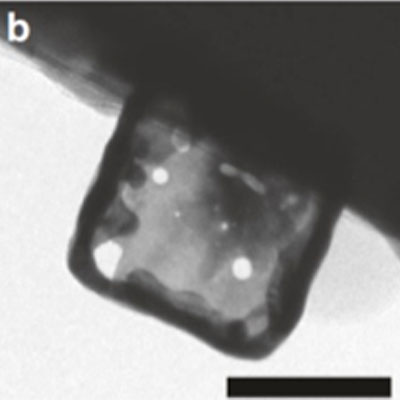
Scientific Achievement: The ability to simultaneously control yield strength and hardening by changing sample dimensions – while keeping the same structural geometry – has been demonstrated using in-situ SEM and TEM compression of gold-silver nanoboxes and molecular dynamics simulations.
Significance and Impact: These nanoboxes provide a tool for fundamental studies into the transitions in deformation mechanisms at extremely small sizes where dislocation nucleation controls plasticity. They could also be used as building blocks in self-assembled, hierarchical materials with tailored yield strength and hardening.
Publication: Patil RP, Doan D, Aitken ZH, Chen S, Kiani MT, Barr CM, Hattar K, Zhang YW, Gu XW. "Hardening in Au-Ag nanoboxes from stacking fault-dislocation interactions." Nature Communications. 2020 Jun 10;11(1):1-9. DOI: 10.1038/s41467-020-16760-1

Scientific Achievement: By incorporating bulky organic molecules, with atoms arranged in a ring, scientists have produced 2D layered perovskite LEDs with a seven-fold increase in brightness compared to perovskite LEDs layered with organic molecules in a linear chain.
Significance: This work suggests that the charges are strongly coupled to the structure in 2D perovskite system, and that structure tuning will allow manipulation of the charge recombination pathways to produce high light emission properties.
Publication: Tsai H, Liu C, Kinigstein E, Li M, Tretiak S, Cotlet M, Ma X, Zhang X, Nie W. "Critical Role of Organic Spacers for Bright 2D Layered Perovskites Light‐Emitting Diodes." Advanced Science. 2020 Apr;7(7):1903202. DOI: 10.1002/advs.201903202

Scientific Achievement: For the first time, scientists have measured and quantified mechanical property changes in molecular materials after introducing engineered defects into uric acid crystals. They found increased softening at low dopant concentrations and increased material strength at high concentrations.
Significance: The concentrations used in this research simulate the typical impurity levels in commodity chemicals used in industry. The results also point toward a new way to tailor molecular crystal mechanical properties in cases where increased plasticity may be beneficial, such as in pharmaceuticals.
Publication: Liu F, Hooks DE, Li N, Rubinson JF, Wacker JN, Swift JA. "Molecular Crystal Mechanical Properties Altered via Dopant Inclusion." Chemistry of Materials. 2020 Apr 23;32(9):3952-9. DOI: 10.1021/acs.chemmater.0c00433
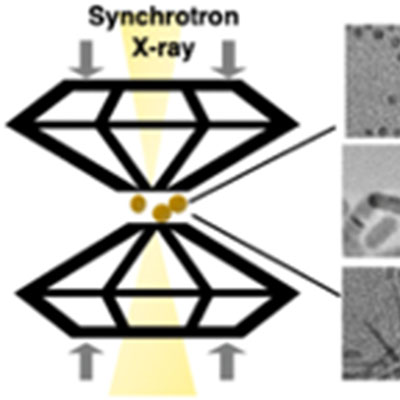
Scientific Achievement: Using wide-angle X-ray scattering (WAXS) and transmission electron microscopy (TEM), scientists have shown that the shape of semiconductor nanocrystals plays an important role in determining their high-pressure properties, specifically for phase transitions.
Significance: This work provides important insights into the phase–structure–property relationship of nanoparticles, which could guide the design and development of novel functional nanomaterials.
Publication: Meng L, Lane JM, Baca L, Tafoya J, Ao T, Stoltzfus B, Knudson M, Morgan D, Austin K, Park C, Chow P. et al. "Shape Dependence of Pressure-Induced Phase Transition in CdS Semiconductor Nanocrystals." Journal of the American Chemical Society. 2020 Mar 23;142(14):6505-10. DOI: 10.1021/jacs.0c01906
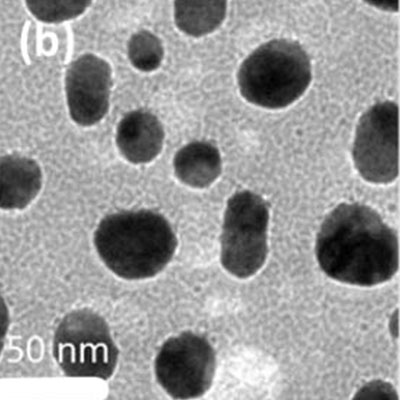
Scientific Achievement: Using ultrafast optical spectroscopy to compare nanoparticles of gold, gold/nickel, and gold/platinum, CINT scientists have shown that the optical properties of these plasmonic nanoparticles are affected by their composition.
Significance: The alloyed nanoparticles substantially increase carrier relaxation rates. This work could be applied to the design of novel catalysts which can efficiently exploit light for industry-relevant catalytic reactions.
Publication: Sim S, Beierle A, Mantos P, McCrory S, Prasankumar RP, Chowdhury S. "Ultrafast Relaxation Dynamics in Bimetallic Plasmonic Catalysts." Nanoscale. 2020. DOI: 10.1039/D0NR00831A
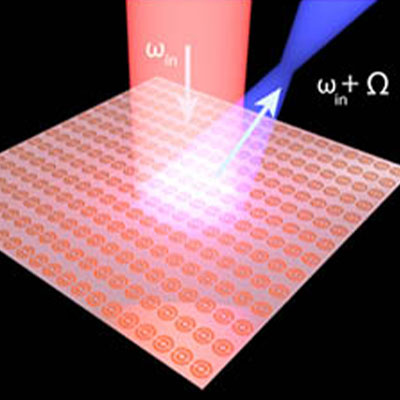
Scientific Achievement: For the first time, scientists have demonstrated extreme nonreciprocity in microwave reflections, allowing one-way steering and focusing of signals.
Significance: This work provides important insights into the phase–structure–property relationship of nanoparticles, which could guide the design and development of novel functional nanomaterials.
Publication: Cardin AE, Silva SR, Vardeny SR, Padilla WJ, Saxena A, Taylor AJ, Kort-Kamp WJ, Chen HT, Dalvit DA, Azad AK. "Surface-wave-assisted nonreciprocity in spatio-temporally modulated metasurfaces." Nature Communications. 2020 Mar 19;11(1):1-9. DOI: 10.1038/s41467-020-15273-1
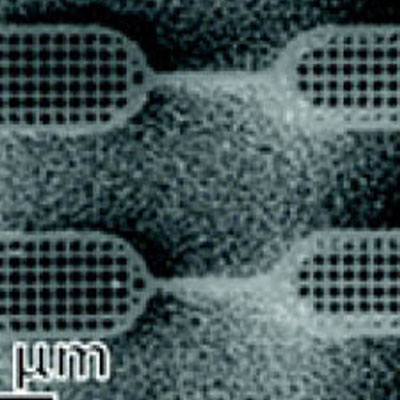
Scientific Achievement: For the first time, scientists have measured true activation volume using in-situ TEM observations of plastic deformation in ultrafine-grained gold under tension.
Significance: This approach enables the nanoscale mechanisms responsible for time-dependent plasticity to be unambiguously correlated to the activation volume measurements.
Publication: Gupta S, Stangebye S, Jungjohann K, Boyce B, Zhu T, Kacher J, Pierron ON. In situ TEM measurement of activation volume in ultrafine grained gold. Nanoscale. 2020;12(13):7146-58. DOI: 10.1039/d0nr01874k

Scientific Achievement: Photoluminescence lifetime and intensity from nanoparticle assemblies was spatially mapped on the nanoscale using a newly developed super-resolution imaging system.
Significance: Closely-spaced energy donating and accepting sites can be spatially resolved and characterized with this technique, enabling direct visualization of energy transport pathways within nanostructures.
Publication: Dunlap MK, Ryan DP, Goodwin PM, Werner JH, Majumder S, Hollingsworth JA, Gelfand MP, Van Orden A. Super-resolution photoluminescence lifetime and intensity mapping of interacting CdSe/CdS quantum dots (Featured Article). Applied Physics Letters. 2020 Jan 13;116(2):021103. DOI: 10.1063/1.5132563
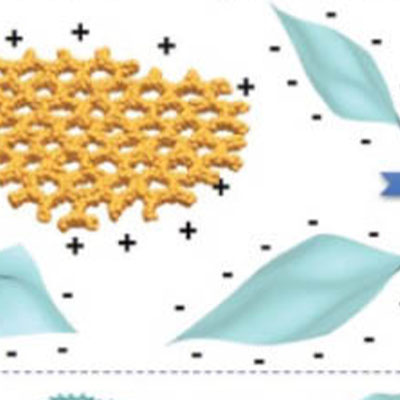
Scientific Achievement: A novel technology has been developed for potassium ion batteries which reduces dendrite formation, a key factor in premature battery failure.
Significance: A 3D copper current collector is functionalized to become potassiophilic, which promotes 2D layer-by-layer growth, and geometrically frustrates 3D dendrite growth.
Publication: Liu P, Wang Y, Gu Q, Nanda J, Watt J, Mitlin D. "Dendrite-Free Potassium Metal Anodes in a Carbonate Electrolyte." Advanced Materials. 2020 Feb;32(7):1906735. DOI: 10.1002/adma.201906735

Scientific Achievement: Discovered a new flow-driven linking process in ring polymers that explains their anomalous viscosity.
Significance: Ring knotting is a new mechanism in polymer physics that may be harnessed to design fluids that are selectively viscous to extensional flow but flow easily in other conditions.
Publication: O’Connor TC, Ge T, Rubinstein M, Grest GS. "Topological linking drives anomalous thickening of ring polymers in weak extensional flows." Physical Review Letters. 2020 Jan 13;124(2):027801. DOI: 10.1103/PhysRevLett.124.027801

Scientific Achievement: To explore materials response to extreme environments, a new approach has been developed at CINT combining laser heating and quantitative mechanical testing during in-situ Transmission Electron Microscopy (TEM).
Significance: This new techniques now permits detailed observation of creep deformation and failure mechanisms active at ultrahigh temperatures, showing the impacts of grain growth, phase transitions, surface diffusion, and interface diffusion.
Publication: Grosso R, Muccillo EN, Muche DN, Jawaharram GS, Barr CM, Monterrosa AM, Castro RH, Hattar K, Dillon SJ. "In situ Transmission Electron Microscopy for Ultrahigh Temperature Mechanical Testing of ZrO2." Nano Letters. 2020 Jan 13. doi: 10.1021/acs.nanolett.9b04205